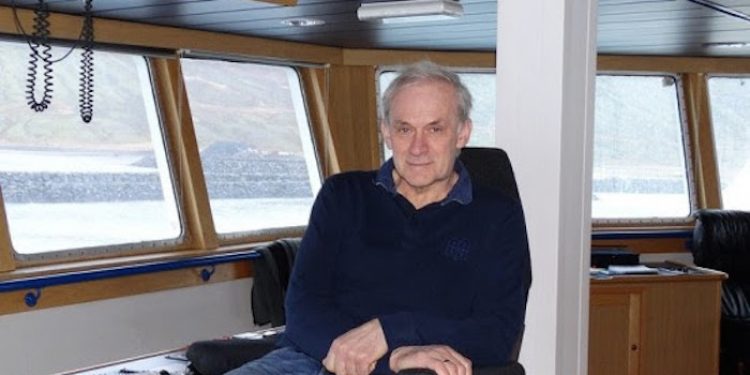Norwegian purse seiner Roaldsen was on its way to land at the Síldarvinnslan factory at Neskaupstaður in eastern Iceland with 430 tonnes of capelin in its tanks when a strong mark appeared on the sounder and skipper Erling Roaldsen reacted quickly, shooting away for an additional 70 tonnes of good-quality capelin.
He said that he had been surprised to see the capelin mark there in the Norðfjörður Bay, as the fishing had been north of Glettinganes.
He commented that Roaldsen has been on Icelandic fishing grounds since the 8th of February and this was their second trip.
“We landed 400 tonnes in Fákrúðsfjörður, so we’ve caught 900 tonnes now of our 1200 tonne quota,’ he said, adding that Roaldsen fishes the quotas for two boats.
“We have been aware of a lot of capelin, especially when we first arrived here. There are also a lot of whales on the grounds, and they normally follow the capelin. The Norwegian boats have been fishing over a wide area, first mainly off the north coast as there was a lot of feed in the capelin caught further east. Most of the boats steam with their capelin to Norway, while some have landed in Iceland, as we have been doing,” he said.
“We can catch capelin here in Iceland until 22nd of February but we’re hoping to be able to stay longer. The Norwegian fleet has caught 37.000 tonnes of the 59,000 tonnes we are allowed to catch, so there are 22,000 tonnes left.”
The capelin landing by Roaldsen follows a call at Síldarvinnslan’s factory by Norwegian pelagic vessel Storeknut earlier in the week with 1850 tonnes of blue whiting caught in EU waters west of Ireland.
According to skipper Tor Magne Drønen, the fish were caught in four tows, and their quota is enough for three more trips on blue whiting.
‘There is plenty of blue whiting to be seen there and not many trawlers fishing. We were the only Norwegian boat there,’ he said, adding that they steamed for three days to Neskaupstaður and Storeknut left as soon as discharging was complete to return to the same area west of Ireland.









